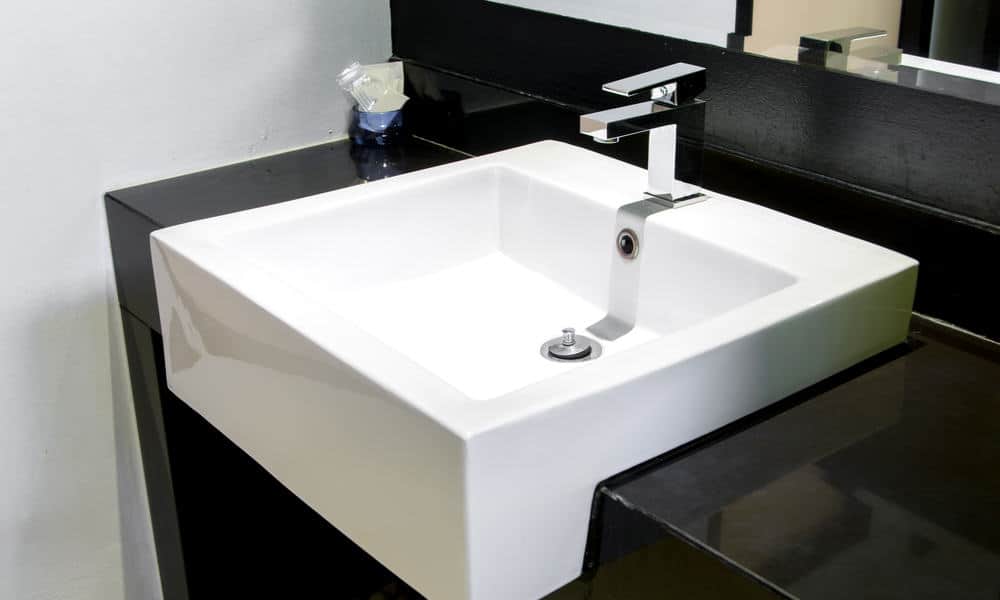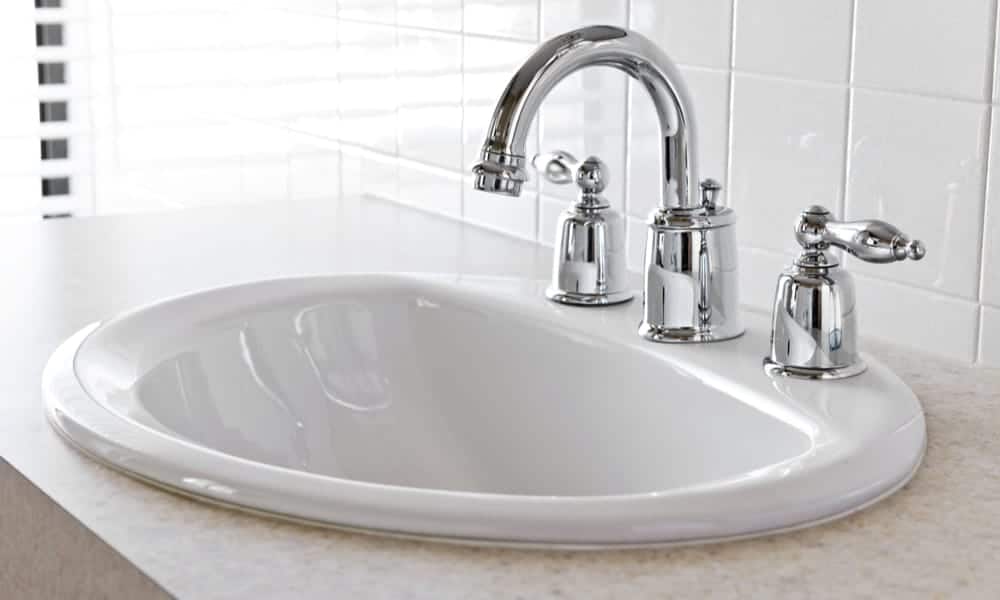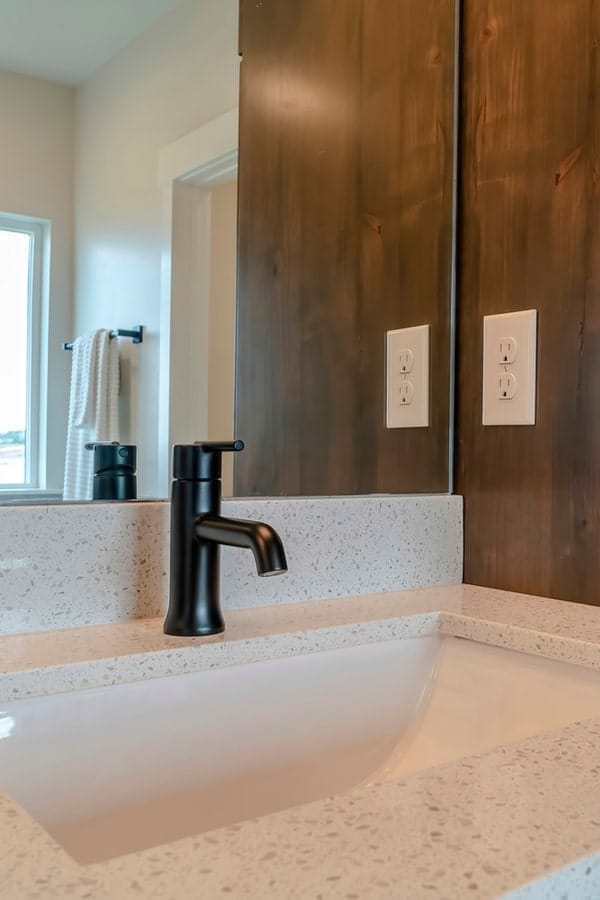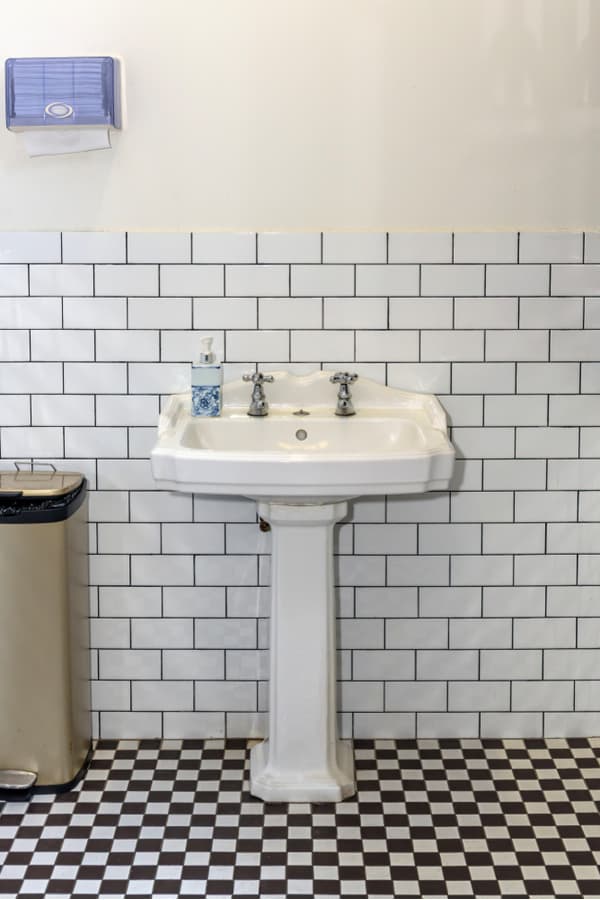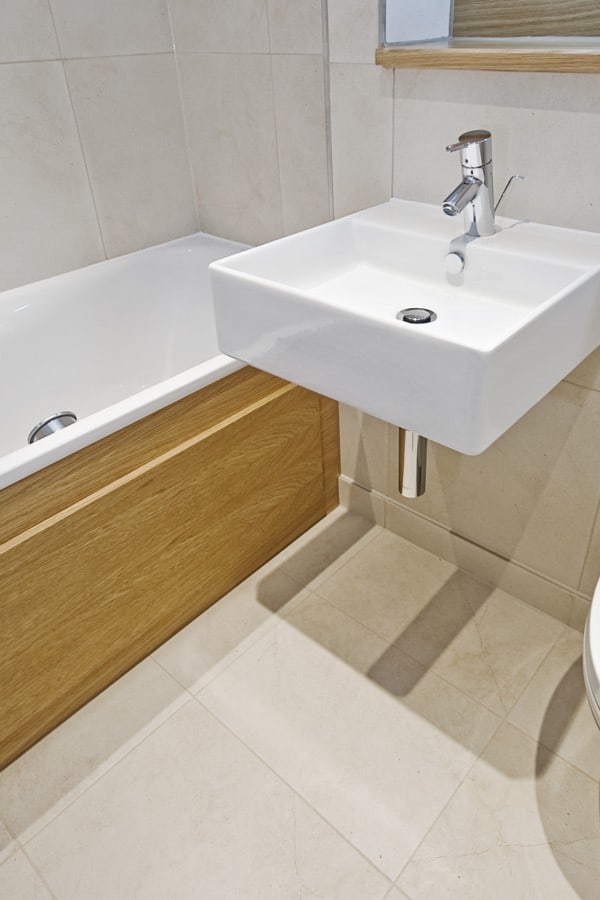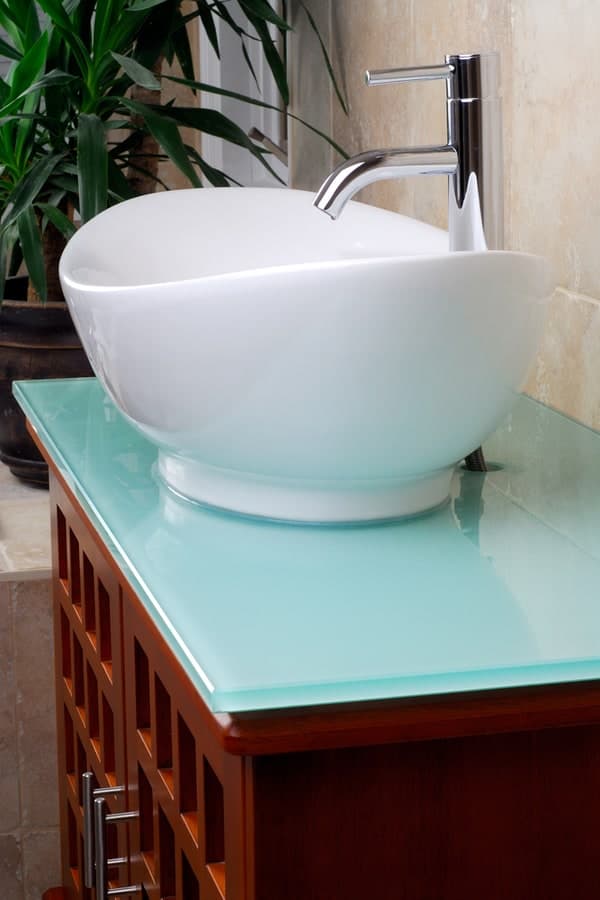Whether you are giving you whole bathroom a makeover or simply replacing an old sink that has had its day, choosing the right model is a decision that shouldn’t be taken lightly since sinks are not cheap and, with luck, it should be there for a long time to come.
When choosing a new sink, there are several aspects that you need to consider, including style, material and color. However, before you can look at any of these, the first thing to think about is the size – and to help you get it right, here is our complete bathroom sink size guide.
How are bathroom sinks measured?
Before we talk about the different sizes of bathroom sinks, we need to understand how bathroom sinks are measured since there are different ways of doing this, largely depending on the shape.
First, if you are looking at rectangular sinks, you need to know the width, i.e. the measurement from one side to the other, and the length, i.e. the measurement from the front of the sink to the back.
You also need to distinguish between the height and the depth. The height of the sink refers to the external measurement form the top to the bottom of the sink while the depth refers to the depth of the water it can hold.
If a sink has an overflow, the depth of the sink is measured from the bottom of the interior of the sink to the overflow since this will be the maximum depth of the water (unless you block the overflow).
Measurements of oval or round sinks are similar, but with round sinks, the measurement of the sink’s diameter replaces the length measurement that you have with a rectangular sink.
However, with some styles of sinks – and we’ll talk about these in more detail in a moment – there are some other relevant measurements to take notice of.
If you have a sink that is installed in a vanity, you should pay attention to the amount of counter that is left over on either side of the sink itself.
With vessel sinks, you should also think about the height of the sink about the countertop.
What are the standard sizes that are available?
We can start this section by saying that there is no such thing as “regular” sink sizes. They come in a whole range of shapes and dimensions, and there is no standard that they follow.
However, we can give you some kind of an idea about the size ranges that sinks tend to fall into.
Most round sinks have a diameter in the range of about 16-20” with a water depth of around 5-8”.
With rectangular sinks, the usual width is around 19-24”, the length is usually 16-23” and the depth is also around 5-8” – although, generally speaking, they tend to be slightly shallower than round or oval sinks.
Types of bathroom sink
There are several different types of bathroom sink, and the model you choose will affect the size of sink that is suitable for your bathroom – so let’s have a look at the different types now.
1. Drop-in sink
Drop-in bathroom sinks are among the most popular since they are one of the easiest types to install and can be one of the least expensive. They are so-called because the unit “drops in” to a hole in the countertop.
They can be either round/oval or rectangular and usually measure around 16-24” in width and 12-20” in length.
2. Undermount sink
Undermount sinks look superficially similar to drop-in sinks, but the difference is that they are mounted below the surface of the countertop rather than with prominent rims at the top.
They are a little more complicated to install but create a classy, modern look. They are also the easiest to clean.
In terms of dimensions, they are usually broadly similar to drop-in sinks, around 16-24” in width and 12-20” in length.
3. Pedestal sink
A pedestal sink is a type of free-standing sink rather than one that is installed into a countertop. They are a good option in smaller bathrooms where space is more limited.
They come in a range of sizes, including some smaller ones, but in general, they are usually around 22-24” in width and 19-24” from front to back.
Although this might sound larger than some others, since it doesn’t fit into a counter, this can still help save space.
4. Wall-mount sink
In some ways, a wall-mount sink is similar to a pedestal sink – except it doesn’t have the pedestal. Instead, it is attached directly to the wall. This means it has the same space-saving advantages of a pedestal sink but with a more contemporary style.
Another possibility with one of these is to have a sink that is slightly larger thanks to the space you are saving by choosing not to have a vanity or counter.
5. Vessel sink
Unlike drop-in or undermount sinks, which are installed below the surface of the counter, vessel sinks sit on top of the counter, turning them into a striking decorative element in any bathroom.
They usually have roughly the same width and length dimensions as drop-in or undermount sinks, but because they sit on top of the counter, they tend to be slightly shallower.
6. Single bathroom sink or double?
With sinks that are mounted in or on a counter, like drop-ins, undermounts and vessel sinks, you also have the option of choosing between a single and double version.
Double sinks can provide a degree of luxury and opulence in your bathroom – and if you live in a household where multiple people might need to be in the bathroom at the same time, they can prove invaluable.
However, they should only be considered if you have a large bathroom because squeezing a double sink into a small bathroom will take up too much space, leaving the room feeling poky and cramped.
How to choose the correct size for your bathroom
Now we have looked at the different measurements of sinks as well as the different styles that exist, now we can think about how to choose the right size for your home.
First, let’s look at a few general principles – after that, we can also think about how to go about choosing the perfect sink for you.
We can divide sinks into three size categories, small, medium and large.
a). Small sinks
Small sinks are designed mainly for hand washing. They are suitable for installation in secondary bathrooms, but if you need something for things like brushing teeth and other parts of your daily routine, something larger is advisable.
b). Medium sinks
A medium sink is the perfect size for all your regular daily washing actions, such as cleaning teeth, washing hands and so on. This type of sink is large enough to be installed in your primary bathroom.
c). Large sinks
Sinks of above-average size are useful if you need them for actions such as washing hair, washing a baby or washing pets and offer greater levels of convenience. However, due to their size, they are not a good option in smaller bathrooms.
Which size is best?
When choosing a sink, you need to weigh up your requirements and preferences against the reality of your bathroom.
As we just mentioned, if you have a small secondary bathroom that is mainly used by guests to wash their hands, a small sink will be fine. However, if you have a larger bathroom and you prefer something more substantial, this is also a possibility.
The thing to avoid is installing a sink that is too big for the room. If you get it wrong, the harmony of the room will be upset, the sink will look too big for the room and the room will feel smaller.
Also consider the style of sink that is best suited to your bathroom. If you have a large bathroom, you can consider a larger sink with a vanity.
However, even if you love the idea, it might be better to choose something like a pedestal sink if the reality of your smaller bathroom suggests this might not be practical.
Measuring your sink
Once you have decided which type of sink you want, you need to measure carefully.
If you are replacing a drop-in sink, the measurements are simple. You only need to measure the existing hole left by your previous drop-in and find another one with the same dimensions.
If you are installing a whole new sink, perhaps with an accompanying new vanity, you should measure all the dimensions carefully, including the width and the length (from the front of the sink to the back).
The key is to pay close attention to the specifications sheet for the exact dimensions to avoid making any mistakes.
Depending on the type of sink, you should also allow a little extra on each side. For example, with an undermount sink, you should leave around 1½ -2½” extra around the sides.
With any vanity-mounted styles, make sure you leave enough counter around the edges too – otherwise, you will lose the benefits of having a countertop sink.
Finally, don’t forget about the measurements related to the faucet. Again, check all the relevant specs sheets carefully.
Many sizes and shapes
As you can see, bathroom sinks come in all shapes and sizes, and there is no such thing as a “standard size”. The key is to choose one that is a suitable size for your bathroom and then to check the specifications sheet carefully when taking measurements for installation.

